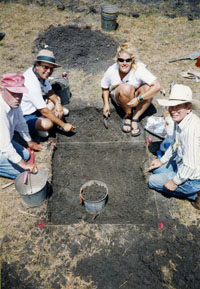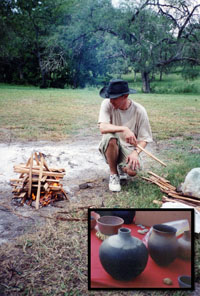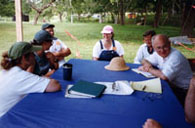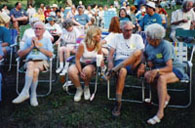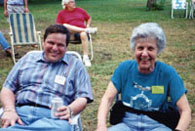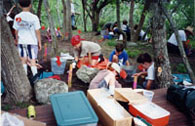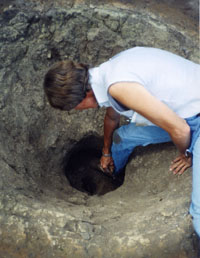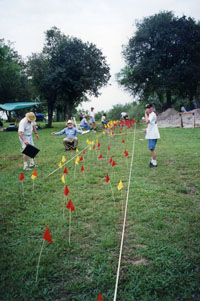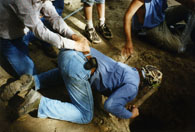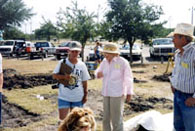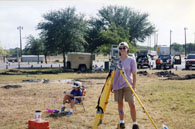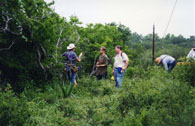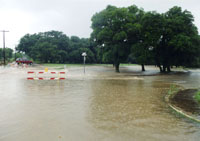
Torrential rains flooded streets and the site area before, during, and after the 1998 field school.  |
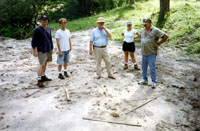
In the flood's wake. Field school directors Thomas R. Hester (in pith helmet) and Tamra Walter examine the layer of mud deposited by Guadalupe River flood waters. Photo by Curt Harrell.  |
|
In spite of weather and often difficult conditions, the TAS members persevered, making considerable contributions to our understanding of life at the missions and Spanish Colonial architecture. In the process, they had a great time.
The TAS field school is held annually to promote learning in archeology, contribute to archeological knowledge about prehistoric and historic sites, and provide a great community experience. To learn more about becoming a member, visit the TAS website.
Editor's note: This section benefited from the thoughts and recollections of May Schmidt, TARL librarian and 30-year+ TAS field school attendee.
|
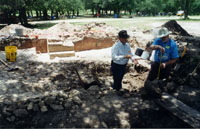
Jack Eaton and Jerry Humphries work in the friar's quarters.  |
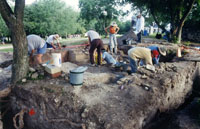
TAS crews carefully expose features within the 18th-century friar's quarters, including a two-stepped altar and red-plaster walls.  |
|

